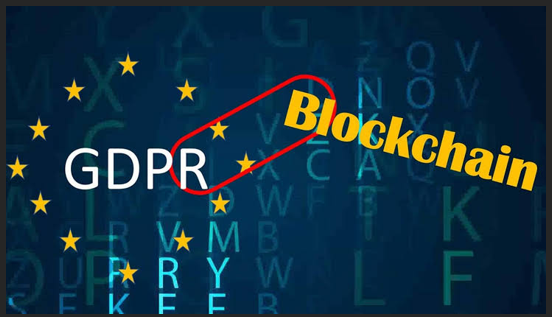
The Conflict — GDPR vs. Blockchain
Understanding the GDPR and Blockchain Conflict
The GDPR and blockchain conflict has grown into a critical regulatory battleground. On one side stands GDPR—Europe’s stringent privacy regulation emphasizing individual control, consent, and the “right to be forgotten.” On the other side is blockchain, built for immutability, transparency, and decentralization.
At the heart of this conflict lies Article 17 of the GDPR, which grants individuals the right to request erasure of their personal data. But on a blockchain, data once added is there permanently—spread across thousands of independent nodes. This leads to a seemingly impossible scenario: how can something be deleted from a system that’s not built to forget?
The Latest Regulatory Development: Paragraph 63
In March 2025, the European Data Protection Board (EDPB) released Guidelines 02/2025, sparking outrage across the Web3 community. Paragraph 63 warns:
“When deletion has not been taken into account by design, this may require deleting the whole blockchain.”
This sentence, buried in the document, sends a chilling message to the blockchain ecosystem. If a blockchain can’t forget one piece of data, the whole system may need to be wiped. For permissionless blockchains like Bitcoin and Ethereum, this amounts to an existential threat.
Why GDPR Was Never Designed for Blockchain
When the GDPR was adopted in 2018, it assumed data lived on centralized servers controlled by individual entities. Blockchain was barely on the regulatory radar. In contrast, public blockchains are:
- Distributed – Data is shared across nodes globally.
- Immutable – Altering data undermines trust and integrity.
- Borderless – Data flows don’t respect national boundaries.
This mismatch is the crux of the blockchain compliance GDPR dilemma.
Threat to Europe’s Digital Sovereignty
The EU’s broader ambitions for digital sovereignty include a future where most businesses use European-owned cloud and edge technologies. The Cloud and AI Development Act even aims to triple the EU’s data capacity by 2030.
Yet, ironically, GDPR’s rigid interpretation now threatens to kill the one architecture that can truly offer sovereignty: decentralized cloud infrastructure enabled by blockchain. If blockchain data privacy rules render these systems non-compliant, Europe will remain reliant on hyperscalers like Amazon Web Services and Google Cloud.
Technical Solutions to the Conflict
Rather than dismantling entire blockchains, technological workarounds can balance GDPR’s demands with blockchain integrity:
1. Off-Chain Storage
Storing personal data off-chain while recording only references or encrypted hashes on-chain allows for deletion while preserving blockchain history.
2. Cryptographic Deletion
Destroying the private key that decrypts data can make it effectively inaccessible. This form of zero-knowledge data deletion could satisfy Article 17 without undermining the blockchain.
3. Zero-Knowledge Proofs
These allow a user to prove something about their data (e.g., that it exists, is valid, or meets criteria) without revealing the data itself, preserving both privacy and transparency.
Flawed Assumptions in the Guidelines
The EDPB guidelines make some questionable assumptions:
- That every blockchain must have a single data controller—untrue for public, decentralized systems.
- That every on-chain hash qualifies as personal data—a claim not supported by legal precedent.
- That volunteer validators can be held liable as controllers—risking a collapse in network participation.
The risk is not just to code. It’s to the entire European Web3 innovation ecosystem.
Also Read: Bitcoin Q3 Outlook: Uncertainty After Record Highs
Global Consequences
By requiring “whole-chain deletion,” Europe risks isolating itself from the decentralized world. Developers may relocate, investment may dry up, and applications like on-chain ESG reporting and decentralized identity could vanish from the continent.
The draft guidelines’ bias toward permissioned chains is also problematic—it pushes developers back toward centralized silos, exactly the kind of power structure Web3 was designed to dismantle.
Privacy-by-Design: A Smarter Path
The solution is not prohibition, but adaptation:
- Recognize cryptographic deletion as valid.
- Clarify that on-chain hashes are not inherently personal data.
- Define validators as processors, not controllers.
This approach preserves the privacy-by-design intent of GDPR while respecting the structural needs of public blockchains.
Call to Action
The public consultation period for the EDPB guidelines ends on June 9, 2025. After that, this guidance becomes part of the EU’s enforcement playbook.
If regulators don’t reconsider paragraph 63, Europe may permanently exclude itself from decentralized innovation. Blockchain builders, investors, and legal experts must act now to advocate for technically realistic interpretations of GDPR.
Final Thoughts
The GDPR and blockchain conflict doesn’t have to end in a zero-sum battle. With smart policy, flexible enforcement, and privacy-centric innovation, Europe can be both a global leader in data privacy and a nurturing environment for blockchain development.
But the clock is ticking.

